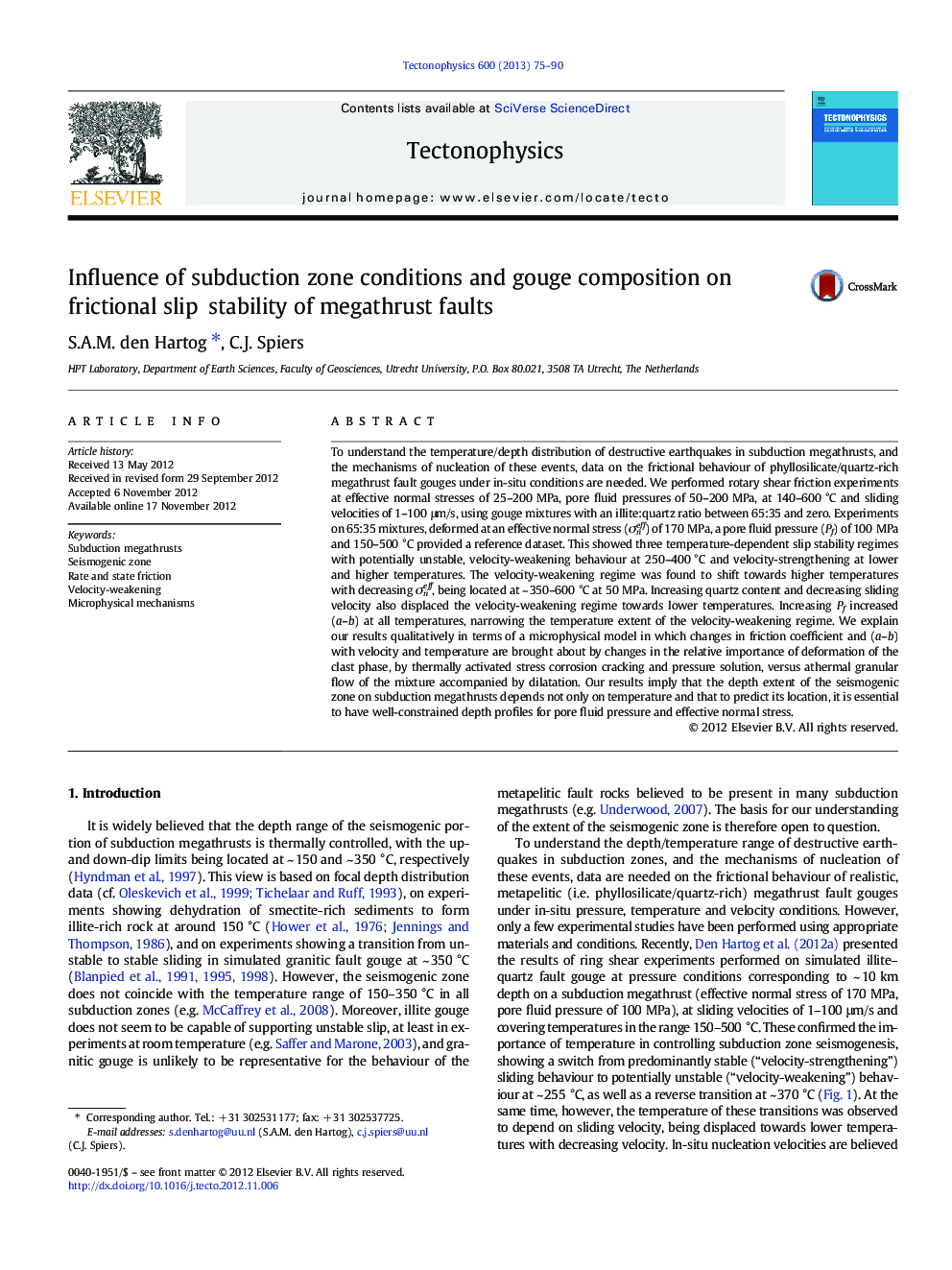| Article ID | Journal | Published Year | Pages | File Type |
|---|---|---|---|---|
| 4692219 | Tectonophysics | 2013 | 16 Pages |
To understand the temperature/depth distribution of destructive earthquakes in subduction megathrusts, and the mechanisms of nucleation of these events, data on the frictional behaviour of phyllosilicate/quartz-rich megathrust fault gouges under in-situ conditions are needed. We performed rotary shear friction experiments at effective normal stresses of 25–200 MPa, pore fluid pressures of 50–200 MPa, at 140–600 °C and sliding velocities of 1–100 μm/s, using gouge mixtures with an illite:quartz ratio between 65:35 and zero. Experiments on 65:35 mixtures, deformed at an effective normal stress (σneff) of 170 MPa, a pore fluid pressure (Pf) of 100 MPa and 150–500 °C provided a reference dataset. This showed three temperature-dependent slip stability regimes with potentially unstable, velocity-weakening behaviour at 250–400 °C and velocity-strengthening at lower and higher temperatures. The velocity-weakening regime was found to shift towards higher temperatures with decreasing σneff, being located at ~ 350–600 °C at 50 MPa. Increasing quartz content and decreasing sliding velocity also displaced the velocity-weakening regime towards lower temperatures. Increasing Pf increased (a–b) at all temperatures, narrowing the temperature extent of the velocity-weakening regime. We explain our results qualitatively in terms of a microphysical model in which changes in friction coefficient and (a–b) with velocity and temperature are brought about by changes in the relative importance of deformation of the clast phase, by thermally activated stress corrosion cracking and pressure solution, versus athermal granular flow of the mixture accompanied by dilatation. Our results imply that the depth extent of the seismogenic zone on subduction megathrusts depends not only on temperature and that to predict its location, it is essential to have well-constrained depth profiles for pore fluid pressure and effective normal stress.
► Frictional strength and (a–b) measured for subduction zone fault gouges. ► Effects of P, T, V and composition investigated. ► Extent of seismogenic zone determined by all variables, not only T. ► Friction controlled by granular flow and thermally activated mechanisms. ► Quantitative microphysical model and Pf profiles essential to map seismogenic zone.
